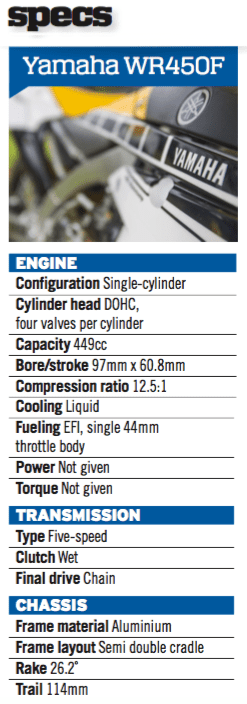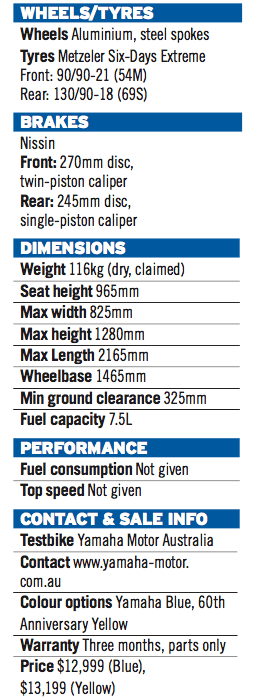There aren’t many motorcycles that can call themselves genuine Aussie legends. The ubiquitous postie bike is certainly one. And perhaps the next most appropriate candidate for that title would be Yamaha’s WR450F, and its predecessors the WR426 and WR400.
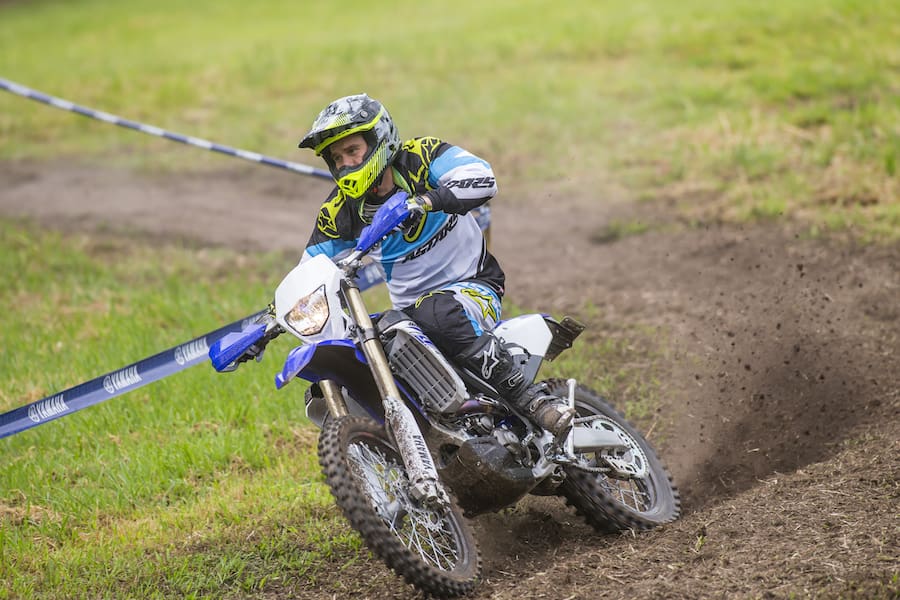
Don’t believe me? Ask any ofthe nearly 27,000 Aussie riders who have shelled out for a brand new WR400, 426 or 450 since 1998. Not to mention the amount who have been given reliable service as second-, third- or fourth-hand owners of WRs. Add the Yamaha WR250F into the mix, and we are talking about around 40,000 units of the WR range sold in Australia over the past 17 years, more than in any other country on the planet. When you think about our low population compared to countries like the USA, that makes us a nation of committed WR nuts – and for good reason.
These true blue chariots of the bush have long been regarded by trail riders as the go-to bikes for Australian conditions. Whether it be in the mud and sludge of the tropical rainforest, the precipitous and razor- like rock-littered slopes of the high country, or the endless bulldust and sand of our desert regions, the WR has forged a reputation for ruggedness and reliability. But its suitability for our conditions is not purely by chance – Oceanic riders have been pivotal in the development of the WR range from day one and throughout its lifetime.
As opposed to the world of roadbikes, where it seems fashion is often the first consideration, trail riders tend to care more about the substance and capabilities of the bike they choose to own. There’s not much comfort to be found sitting, staring at a lifeless yet aesthetically pleasing pile of metal and plastic when you’re stuck 250 kays from civilisation at sunset. For this reason, the dirt fraternity tend to reward the manufacturers that have earned their confidence by pulling out their cash, and there’s no trail bike which opens more Aussie wallets than the biggest four-banger in the WR range.
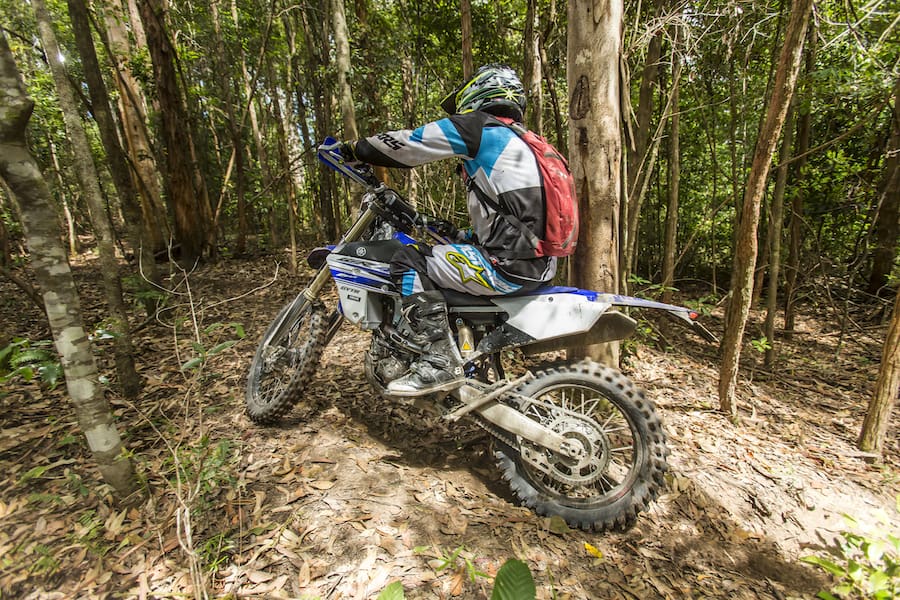
As well as having a bullet-proof reputation, the WR has also won over countless fans by being road registerable – in ADR compliant form it’s even LAMS approved – and rather than trying to create an off-road racer first and foremost, Yamaha has always developed the WR to be accessible to the recreational trail rider. That’s not to say the WR hasn’t also been a potent racebike in the right hands, but the outgoing model has certainly been a little left behind in the world of elite off-road racing.
With this in mind, the question burning deepest in my mind before arriving at the launch of the all-new 2016 WR450F was, ‘will it remain the dinkum trail rider’s choice?’ Knowing the new WR is based heavily on Yamaha’s YZ450F motocross bike, and that the YZ is one of the most serious MX racers around, it seemed inevitable the WR would move away from being that loveable everyman’s bush bike of old.
I consider myself a reasonable trail rider, having mucked about in the bush on bikes for most of my life, but I can count the number of enduro races I’ve entered on one hand and have fingers to spare. My own 450 dirt bike, perhaps foolishly not a Yamaha, had been out of action for far too long before the WR launch, so I was far from fit for purpose.
But because the legacy of the WR range has always been that of an enduro bike suited to the ‘sometimes’ and ‘part-time’ recreational trail riders among us, I figured my rusty reflexes were in the ideal state of tune to test the new model’s trail manners.
The ride
Day one of the launch consisted of a short loop – half technical forest single-track and half tight grass track with a loose powdery base. Think mostly first and second gear, absolutely nowhere to rest, and a track which cut up and became more demanding with every lap. It was a rude shock for my flaccid forearms, and I questioned my ability to get through the 100km trail loop the next day, particularly as it had been set out by Yamaha off-road pro rider Josh Green in, literally, his own backyard.
Thankfully, by the next morning my arms had regained a modicum of feeling and a semblance of strength. And after hundreds of sleep laps and dozens of dream crashes, my brain managed to recalibrate its latent off-road settings.
The trails selected by Green ended up being as brilliant and difficult as I had feared, but my mind and body were now prepared, and the WR450F proved a superbly capable ally to pull me through where my strength and skill levels failed me.
Almost all my trail bikes have been converted motocrossers, and the WR instantly had the familiar urgency and excitement of a pure competition model let loose in the bush. As a trail bike it’s blindingly fast, with immediate bottom-end punch, pulling strong and seamlessly through its midrange to a killer top-end kick. It will be the weapon to watch in this year’s off-road racing scene. Yamaha has big plans for our premiere enduro series, the Australian Off-Road Championship (AORC), where the WR range will be well represented in both 450 and 250 guise.
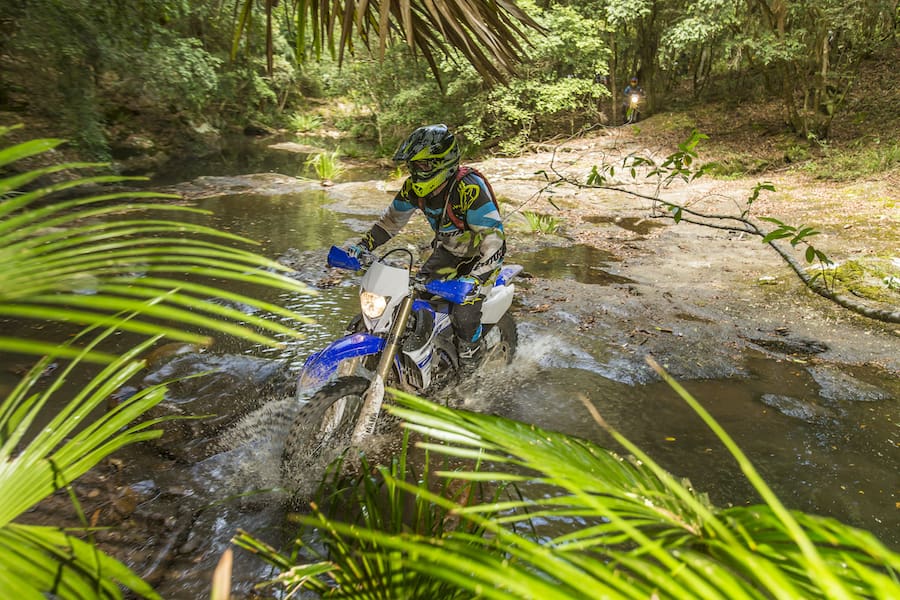
The good news for us mere mortals with a penchant for blue (or yellow), is that the new WR450F is still accessible enough to consider as a mainstream choice for recreational trail riding. Softer trail-tuned valving has successfully reassigned the complete YZ450F suspension package into a platform more suited to bouncing off rocks and popping over logs all day than hitting whoops and landing supercross jumps. The YZ’s KYB air-oil separation (AOS) fork is a widely lauded performer in the motocross world, and transfers its talents well for trail use, as does the KYB rear shock. Both also have the level of fine adjustment you’d expect from a serious competition machine, so can be tuned for individual rider preferences over a wider range than any previous WR450F. In fact, the whole suspension and chassis package has taken a quantum leap forward in control from the old model, with the added benefits of more centralised weight balance and increased suspension travel – up 10mm stroke at the front and 19mm in the rear.
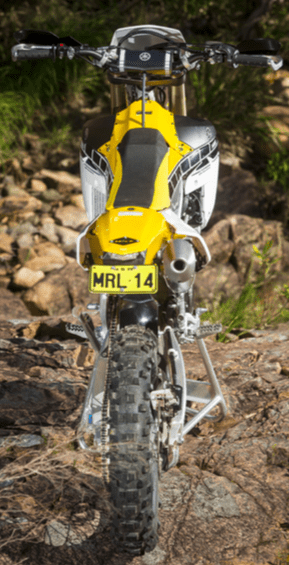

The cockpit also offers a large scope for differing rider size and preferences, with four handlebar positions covering a range of 36.5mm fore and aft adjustment. The footpeg position is set 5mm lower than the previous WR450F, and all in all the new bike provides an uncramped and neutral riding position adaptable to most rider sizes.
With rusty reactions and poor timing inhibiting my abilities on the first day of riding, my saviour was the WR450F’s tuneable ECU, a feature not found on the USA version. Using the optional Yamaha Power Tuner it’s possible to unlock a wide range of power delivery characteristics, from mild to wild. Softening initial throttle response via the Power Tuner, using a combination of ignition and fuel mapping, was a quick and easy process, and made a major contribution to smoothing out my ham-fisted attempts at throttle finesse. I can see this plug-and-play tuner being a very useful addition to the toolbox for anyone who loves to mix up their weekends with different terrain and riding conditions – sharpening power delivery where there’s lots of grip, softening it where there’s none. It also makes it possible to pep things up a bit as you build your skills and confidence.
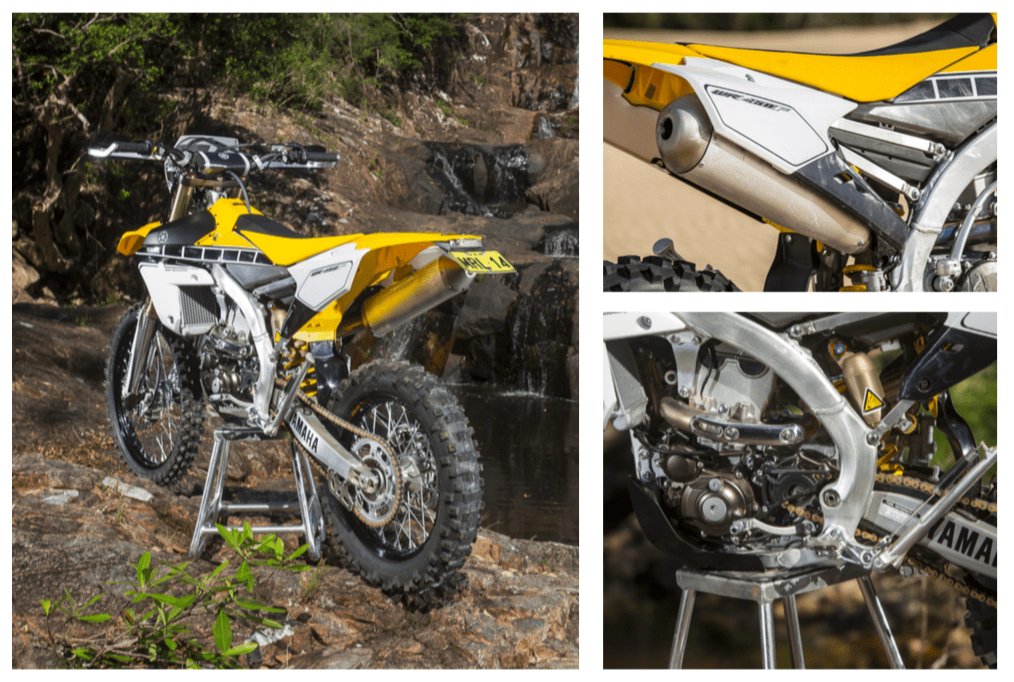
One thing I expected from the WR was for Yamaha to increase the YZ’s crankshaft mass for trail use. On the contrary, although the more powerful 160W generator needed for lighting has added weight, Yamaha has taken a corresponding amount out of the crankshaft to keep overall rotating mass the same as the YZ. This may seem counter-intuitive for an enduro model, but it relates just how much confidence Yamaha has that they got the balance of this engine right first time round. I reckon this was a good call, especially with the versitility that the Power Tuner can give, and you only have to experience how well the WR450F tackles technical climbs to realise this. There’s no need to hit the hill like a bull at a gate or rev the nuts out of the engine, although that does work too if you enjoy the hooligan approach to conquering steep climbs. But the WR finds grip like a thirsty leech on a leg, and shows its true talents and sophistication when inching its way up snotty, loose and rocky climbs in trials-bike-like motion. If you have the confidence to slow it up and pick a challenging line, the WR will get you there and through in unflustered fashion.
This approach to tackling technical terrain wouldn’t work if the WR didn’t have light-footed and precise steering, capable of changing tack with control at the flick of the bars. The WR shares its aluminium bilateral beam frame and all its chassis geometry with the YZ450F, ensuring world motocross championship winning stiffness and accuracy. The only change being 25 per cent thinner engine mounting plates, a way of engineering some ‘give’ into the chassis, softening the connection between the terrain, engine and rider, producing a more trail-friendly level of feel and comfort.
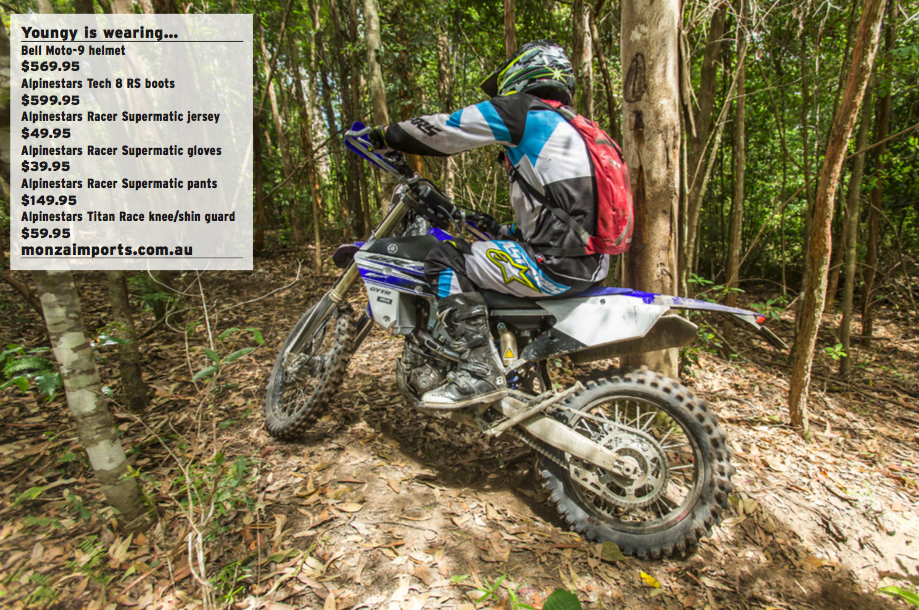
The fitment of an electric starter is a welcome addition to any trail bike, but the WR450F goes one better by also leaving the kickstarter in place, a salvation at those times when a low battery can ruin a day’s riding before it has even begun.
A longer day’s riding is delivered than I had expected from the WR’s 7.5 litre tank, and I completed the 100km ride with the fuel warning light yet to flicker. More grandiose expeditions will require additional fuel reserves, but for everyday adventures the WR450F has a more than respectable range. The low fuel warning light is a great feature for the trail, particularly on a bike whose fuel level is difficult to check visually.
The 2016 WR450F is without doubt a far more serious and potent tool than the much-loved trail bike it replaces. But the benefits of improved handling and overall balance that come with the new YZ-based reverse-cylinder motor, centrally mounted fuel tank, and race-proven suspension technology, make the new WR a better bike for all end users, whether part-time or pro.
Surprisingly, in many situations I found the WR450F even easier to ride than the new WR250F released last year, the usable power of the 450 trumping the slightly lesser weight of its smaller sibling. This is a sure sign that Yamaha has kept the WR450F where it needs to be. True blue.
